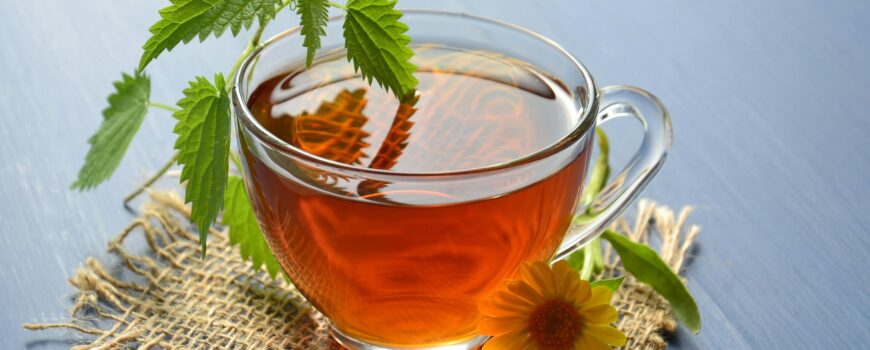Mint tea is a refreshing and soothing beverage that is easy to prepare and offers various health benefits. Here’s how to make it:
Ingredients:
- Fresh mint leaves (a handful) or dried mint leaves (1-2 teaspoons)
- Water (2 cups)
- Honey or sweetener (optional)
- Lemon juice (optional)
Steps:
- Boil Water: Bring 2 cups of water to a boil in a saucepan or kettle.
- Add Mint Leaves: If using fresh mint leaves, lightly crush them to release their oils. Add a handful of fresh mint leaves or 1-2 teaspoons of dried mint leaves to the boiling water.
- Simmer: Reduce the heat and let the water simmer for about 5-10 minutes, allowing the mint leaves to infuse the water.
- Strain: Remove the saucepan from heat and strain the tea into cups.
- Sweeten and Flavor (optional): Add honey or your preferred sweetener for taste. You can also add a few drops of lemon juice for additional flavor and health benefits.
- Serve: Enjoy your mint tea hot, or let it cool and serve over ice for a refreshing iced mint tea.
Health Benefits of Mint Tea
- Aids Digestion:
- Properties: Mint tea contains menthol, which has soothing properties.
- Benefits: Helps relieve indigestion, bloating, and gas. It can also help stimulate bile flow, improving digestion.
- Relieves Nausea:
- Properties: The aroma and compounds in mint can help alleviate nausea.
- Benefits: Useful for reducing morning sickness in pregnancy and motion sickness.
- Reduces Stress and Anxiety:
- Properties: Mint has calming effects due to its natural sedative properties.
- Benefits: Drinking mint tea can help reduce stress and anxiety, promoting relaxation and better sleep.
- Supports Respiratory Health:
- Properties: Mint has anti-inflammatory and antispasmodic properties.
- Benefits: Helps relieve symptoms of colds, congestion, and asthma by soothing the respiratory tract and reducing inflammation.
- Boosts Immune System:
- Properties: Mint is rich in antioxidants and essential vitamins.
- Benefits: Helps strengthen the immune system and protect the body against infections and diseases.
- Improves Oral Health:
- Properties: Mint has antibacterial and antimicrobial properties.
- Benefits: Helps freshen breath and can reduce the risk of oral infections and cavities.
- Enhances Skin Health:
- Properties: Mint has cooling and anti-inflammatory effects.
- Benefits: Can help soothe skin irritations, reduce acne, and improve overall skin health.
- Alleviates Headaches:
- Properties: The menthol in mint can have a soothing effect on headaches.
- Benefits: Drinking mint tea or inhaling its steam can help reduce the severity of headaches and migraines.
Tips for Making and Enjoying Mint Tea
- Fresh vs. Dried: Both fresh and dried mint leaves can be used, but fresh leaves often provide a more vibrant flavor.
- Combining Herbs: Mint can be combined with other herbs like chamomile, ginger, or lemon balm for added health benefits and flavor variations.
- Regular Consumption: Drinking mint tea regularly can help you enjoy its health benefits consistently.
- Storage: Store dried mint leaves in an airtight container away from direct sunlight to preserve their potency.
Mint tea is not only delicious but also offers numerous health benefits, making it a wonderful addition to your daily routine. Whether enjoyed hot or cold, mint tea can provide a refreshing and health-boosting beverage choice.
Zircon Tea Company
Contact No is +91-9499347308
Email is info@zirconshop.in
Our You Tube Channel Is Zircon Tea Company




